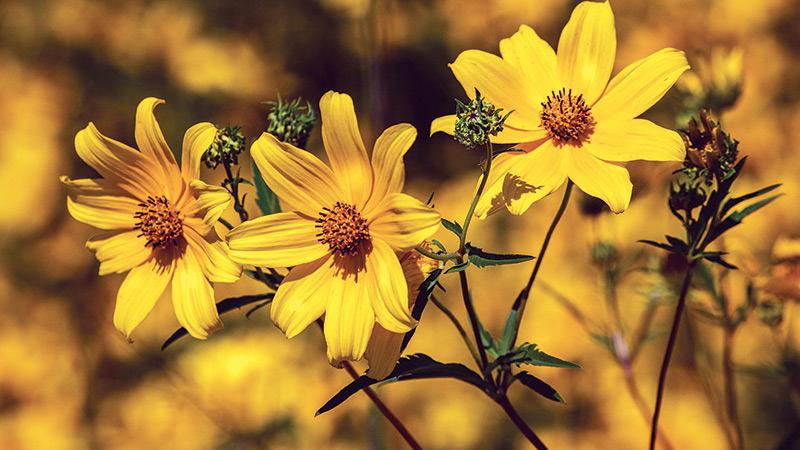Looking for an easy, but showy perennial? Try coreopsis

By Marilyn McKinley
OSU master gardener volunteer
CANFIELD
I am putting in a coreopsis bed next year. I am planning this bed because coreopsis is a care-free perennial, comes in several colors and has long-lasting blooms.
Coreopsis, sometimes referred to as tickseed, is a member of the sunflower family, and is easy to grow. The term “tickseed” refers to the shape of the coreopsis seed – it looks like a tick. One variety, coreopsis major, is a native Ohio plant.
These plants are perfect for the cottage-type garden. Not only do the bloom colors vary, but so does the texture of the foliage. Colors range from various shades of yellow and orange to pink, to dark red, to white with dark centers. Some types have tall, straight stems, others have fine fernlike stems. The plant size varies. Most are between 10 and 18 inches tall and spread about 12 to 24 inches.
Tickseed tends to grow in clumps; some types reseed; some spread by sending out runners. Coreopsis will benefit from deadheading. I just shear mine off and another round of blooms soon appears.
Beware, there are types that will not survive our zone 5 as “hardy” plants. This is particularly true of some of the newest hybridized varieties. Also, know that some coreopsis cultivars are short-lived. Be sure to check the label or the seed packet for more information.
Coreopsis does best in full sun, but mine do well in part shade also. These beauties make great border plants and because of their long bloom time are great fillers. This is a plant that is not fussy about the soil type or pH, but will do better and last longer if planted on a mound or in well-drained soil. Plants will need sufficient water until established, but after that are very drought-tolerant. These guys are rugged, but they are not long-time perennials. Most will live three to five years. Leaving the foliage all winter or covering with a heap of mulch will improve their ability to over-winter. They are easy to grow from seed, so it’s not a big deal to keep a nice bed going if you lose a couple each year.
Note: As with most plants, hybrid seeds will not produce true to seed offspring.
They do make a nice cut flower with staying power. Thankfully, coreopsis is relatively problem-free. In very damp seasons you might see slugs, and a few fungal diseases can affect them, but not kill them. However, giving plants proper air circulation should eliminate the problem. Though not a common problem, tobacco mosaic virus, which is transmitted by aphids, is a fatal condition.
Some of my favorite varieties are: “Early Sunrise” – larger bright yellow flower, early bloomer; “Moonbeam” – airy with buttery yellow flowers; “Nana” – dwarf variety with mauve pink flowers; “Zagreb” – golden flowers; “Major”– yellow flowers, and as mentioned, native to Ohio.
All coreopsis plants are resistant or somewhat resistant to deer damage.
Learn more about these plants and other cultivars at http://go.osu.edu/coreopsis .
 43
43
